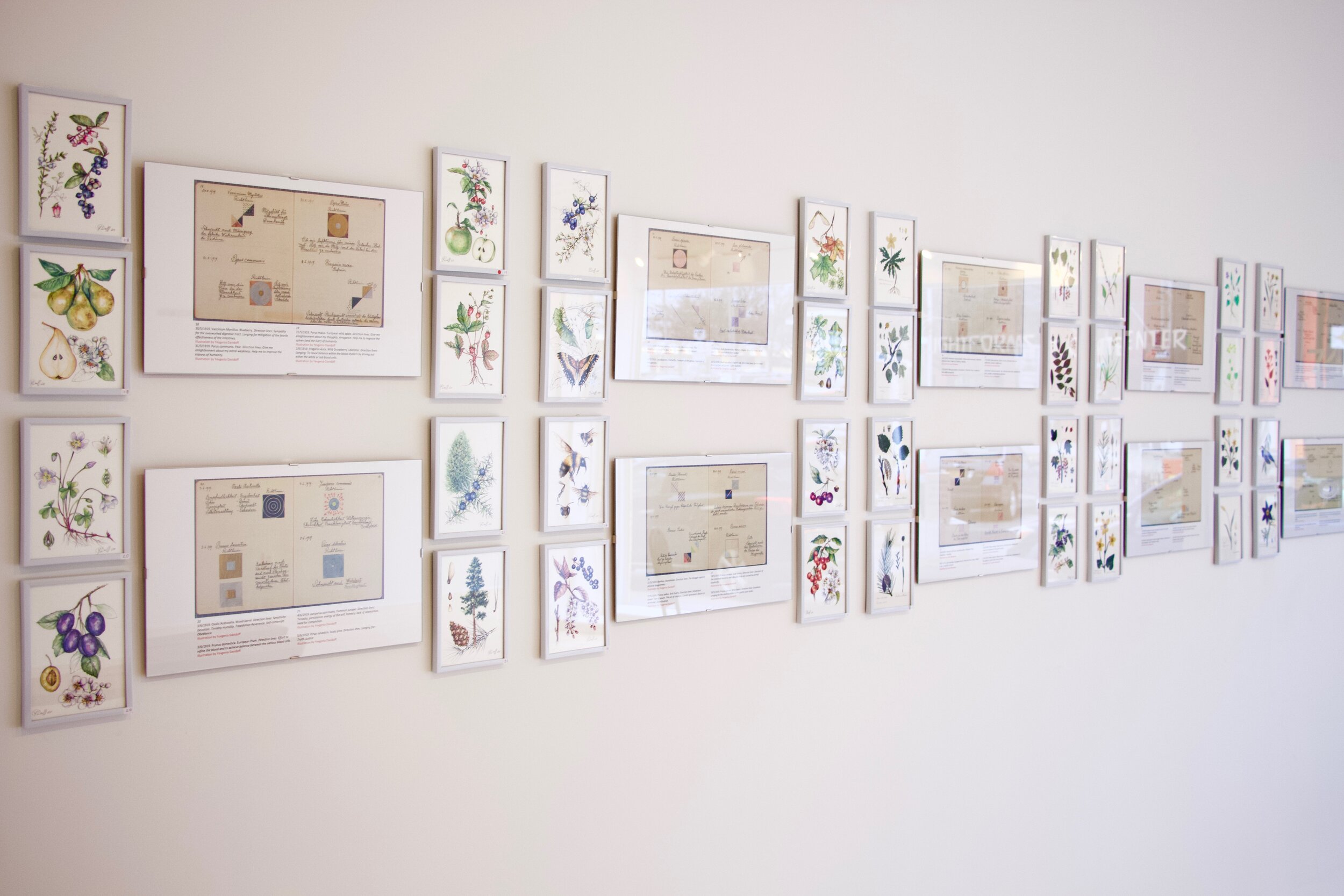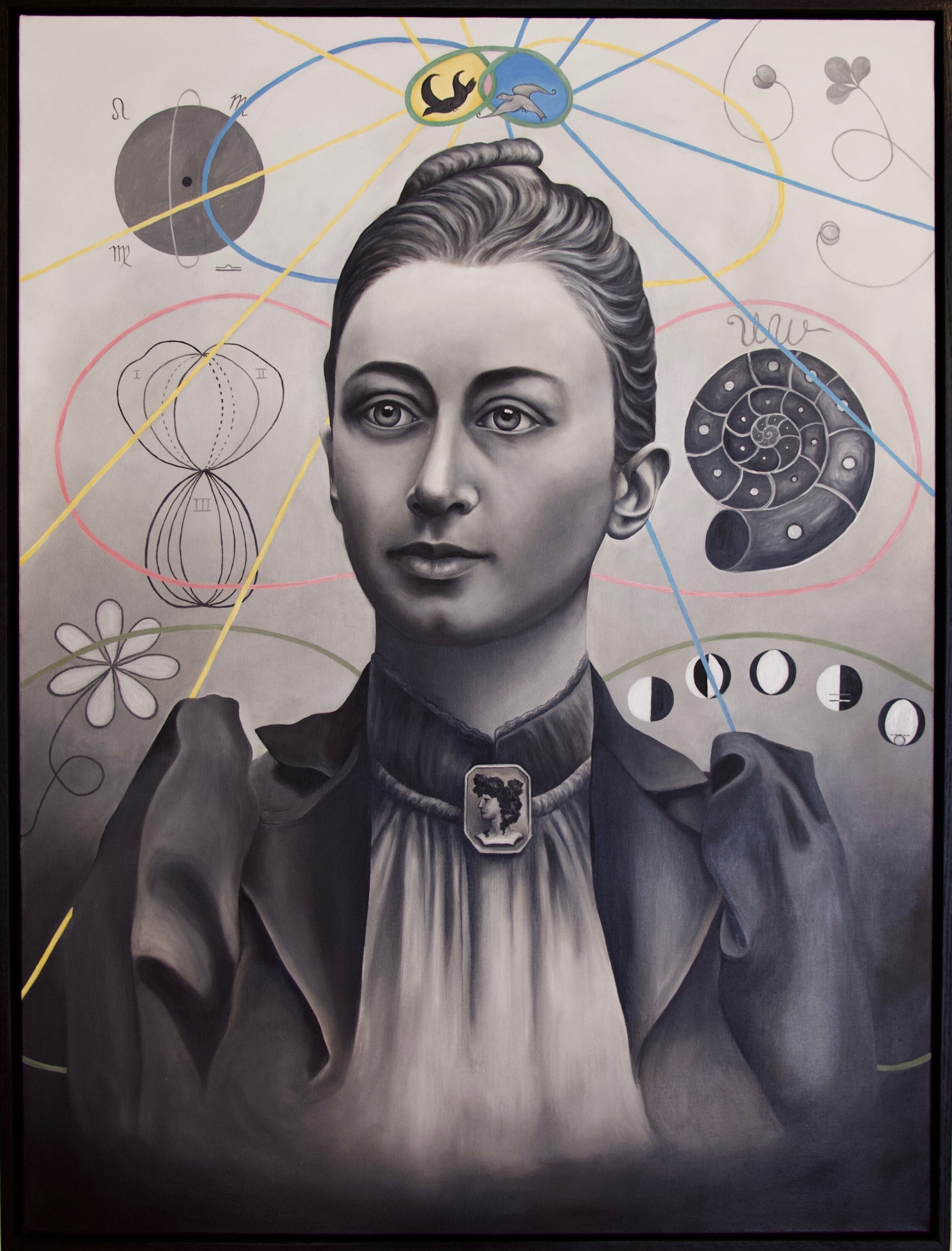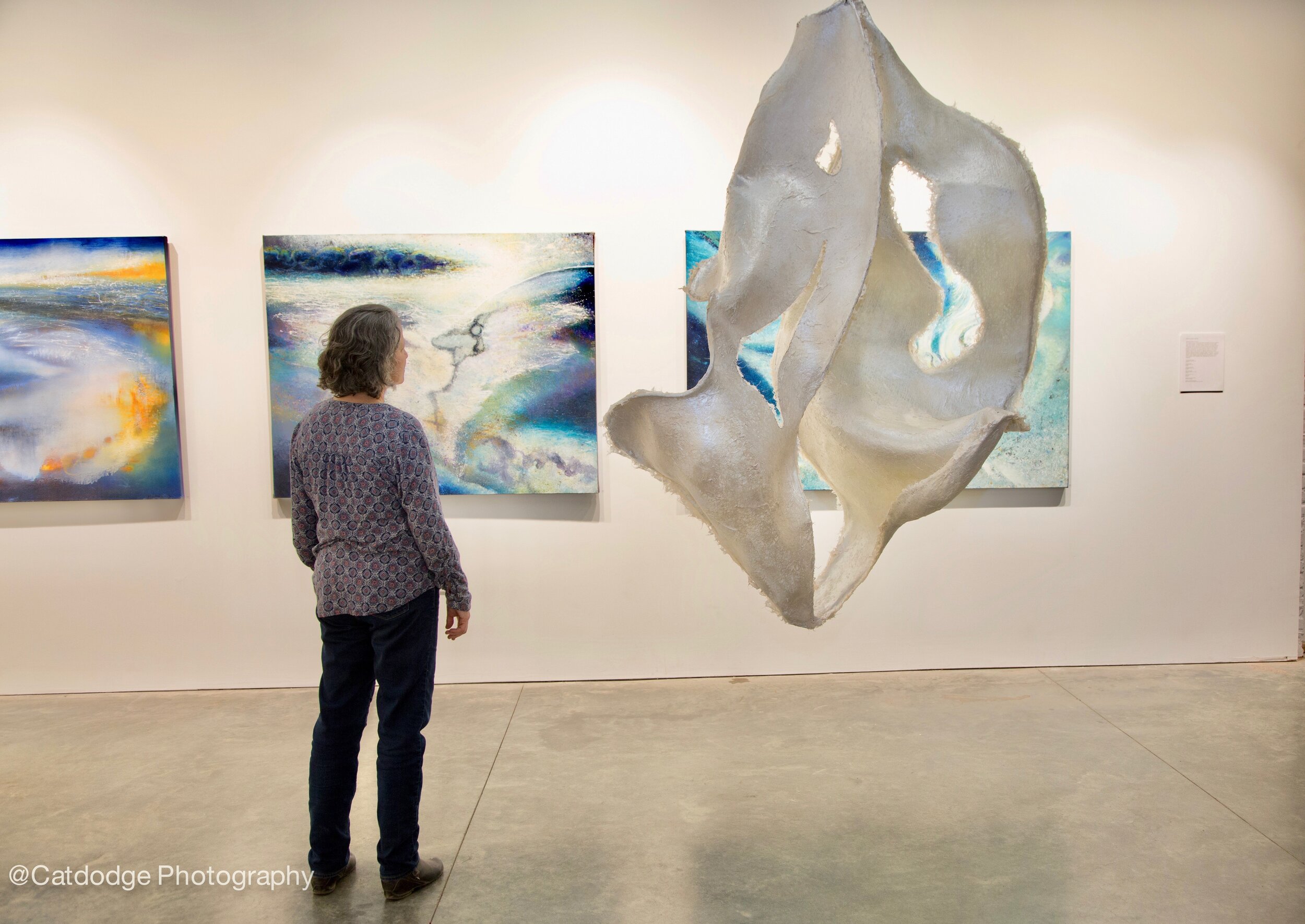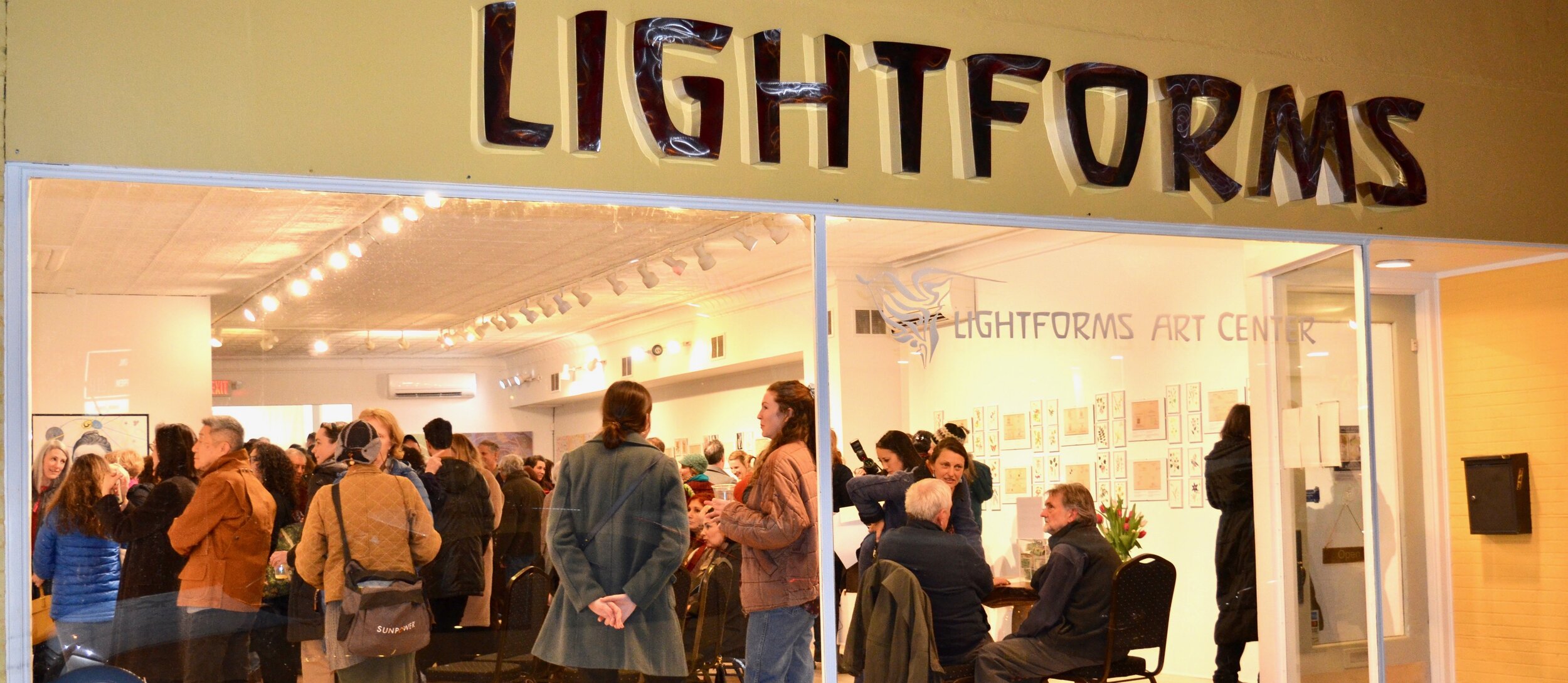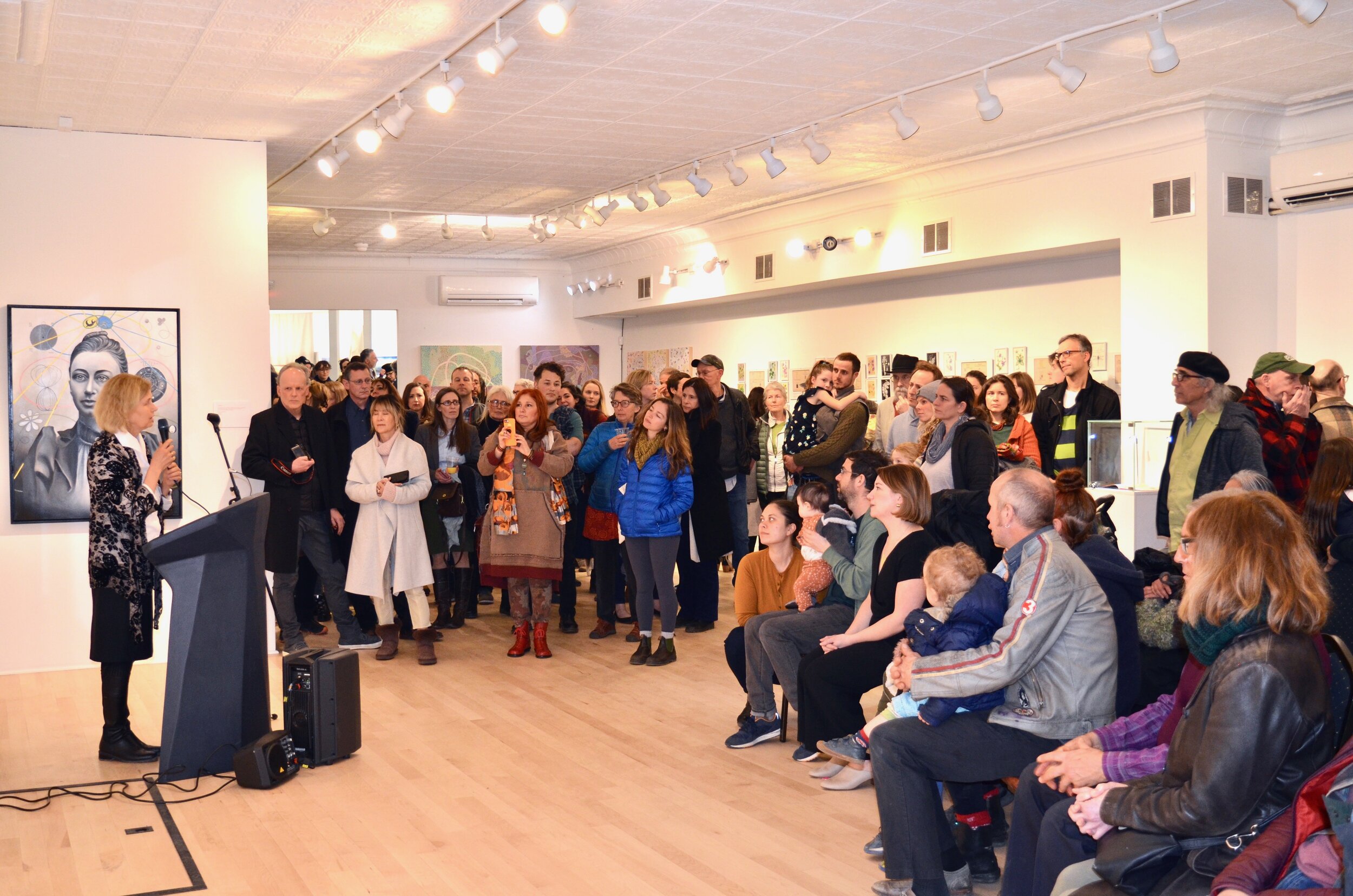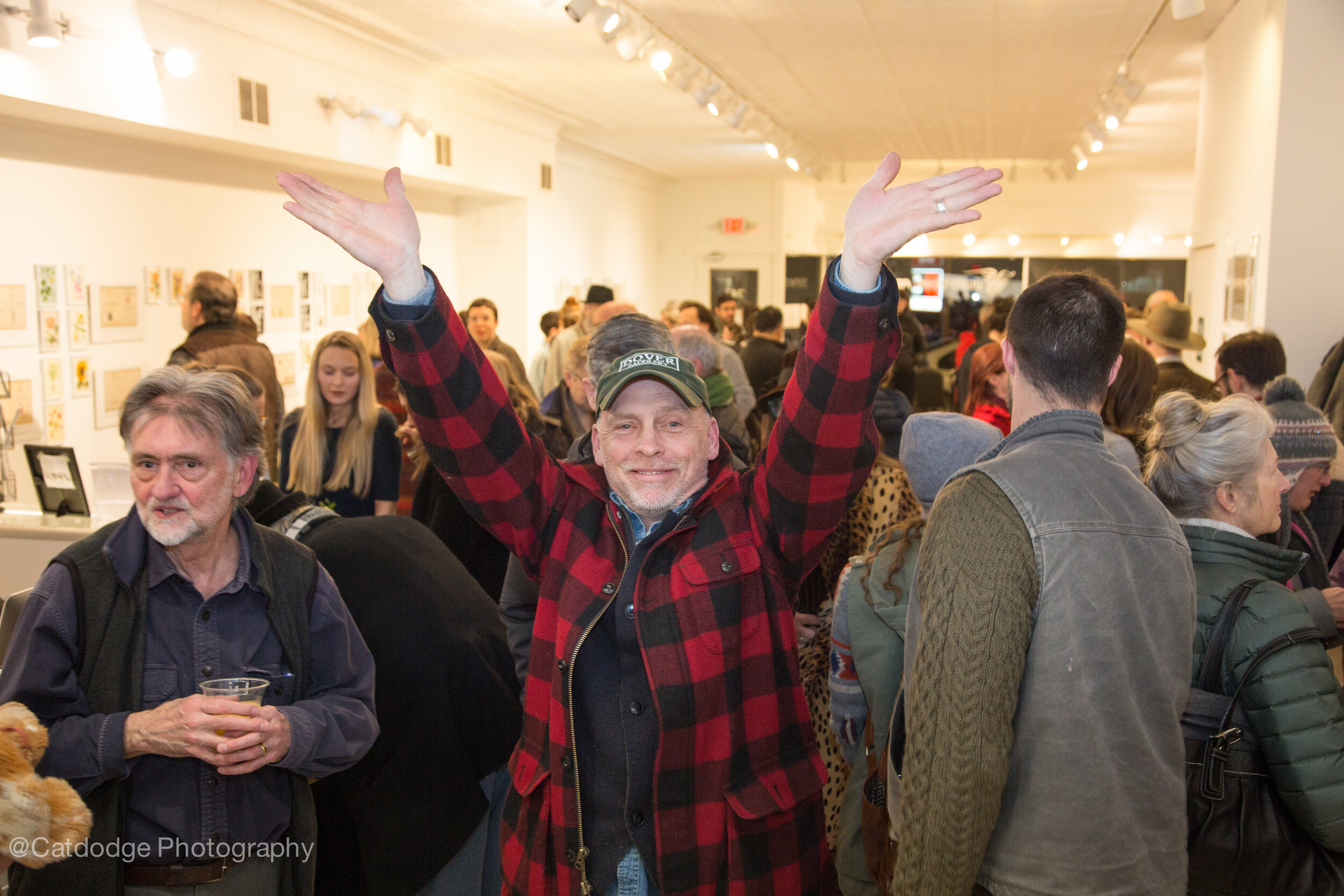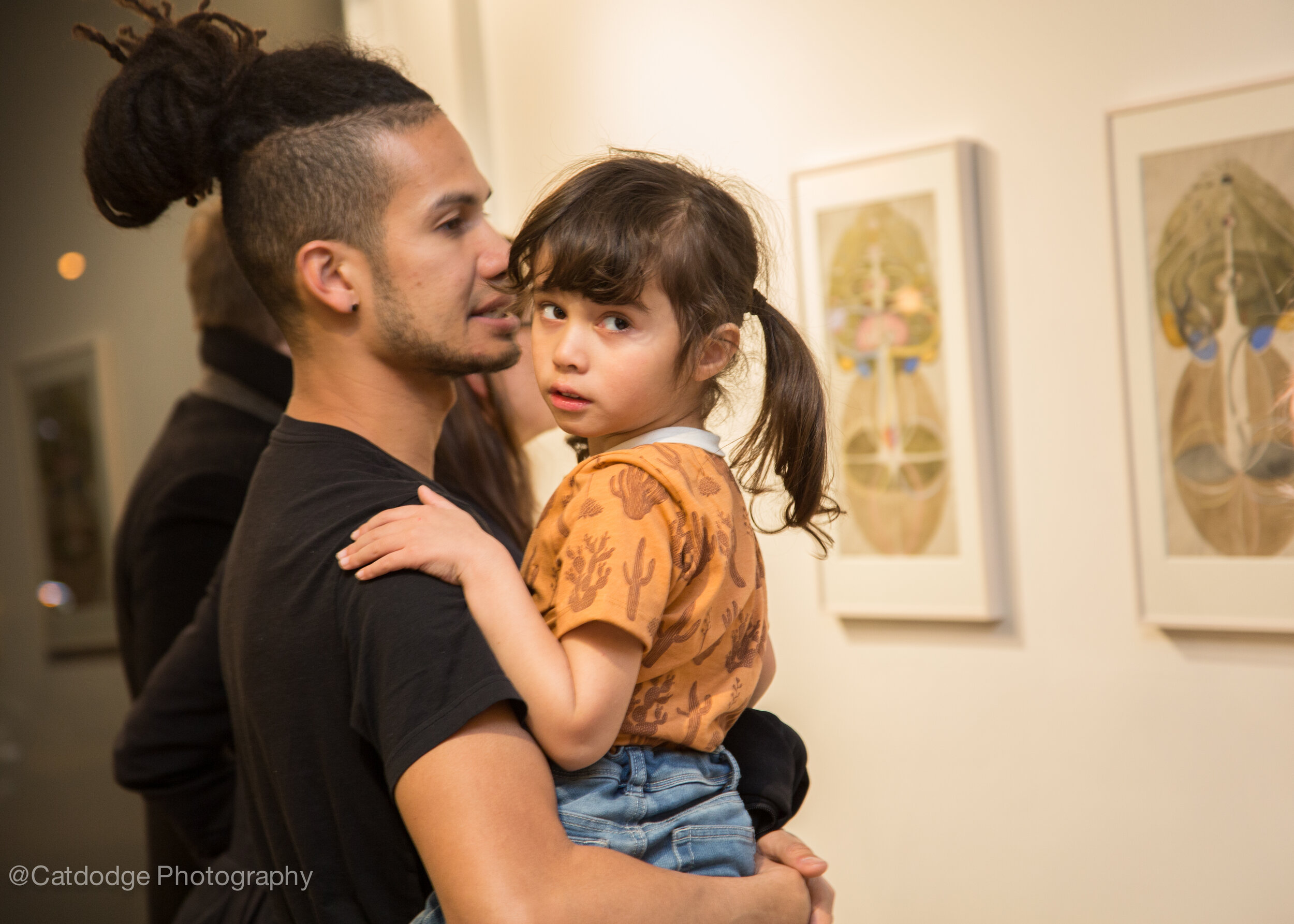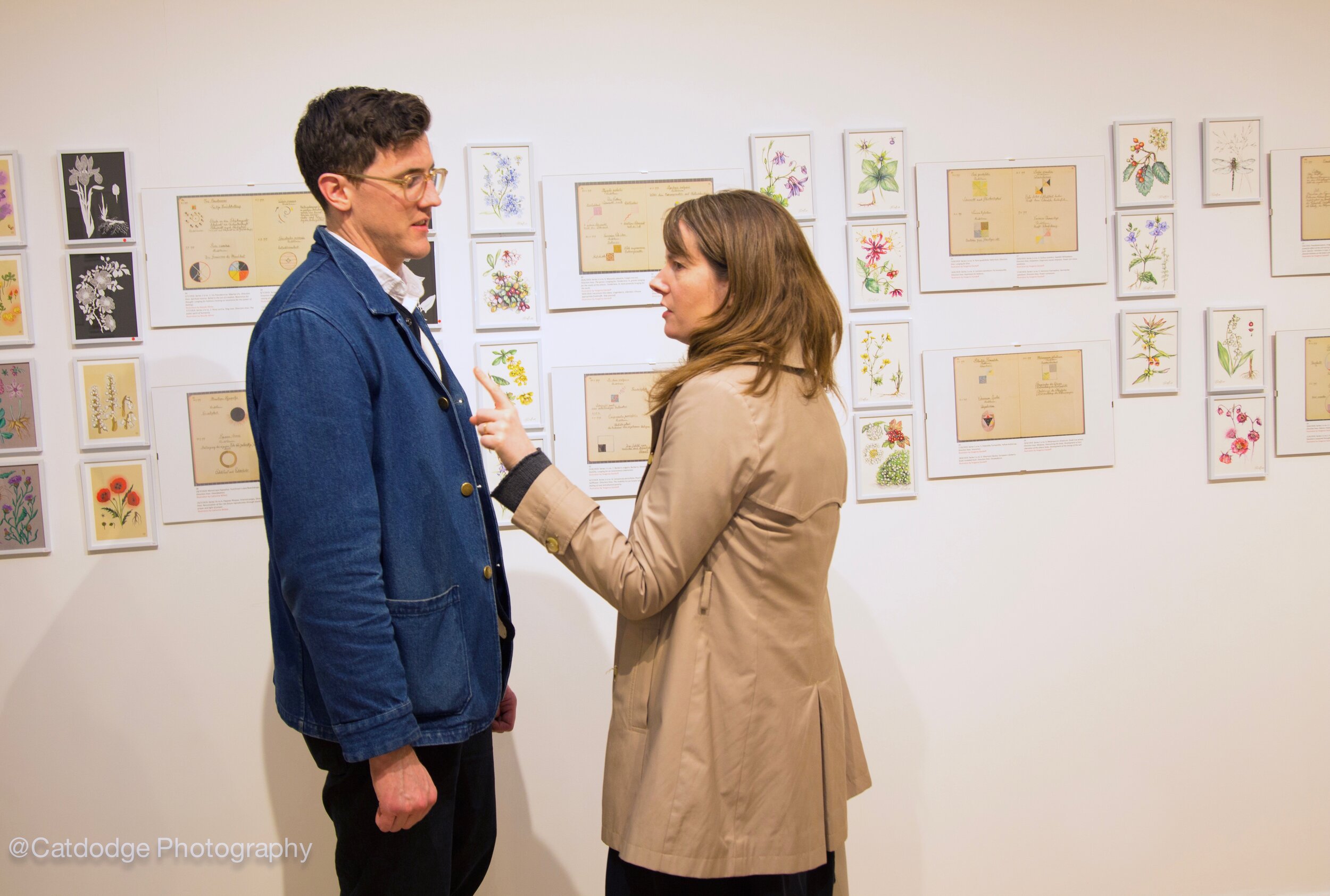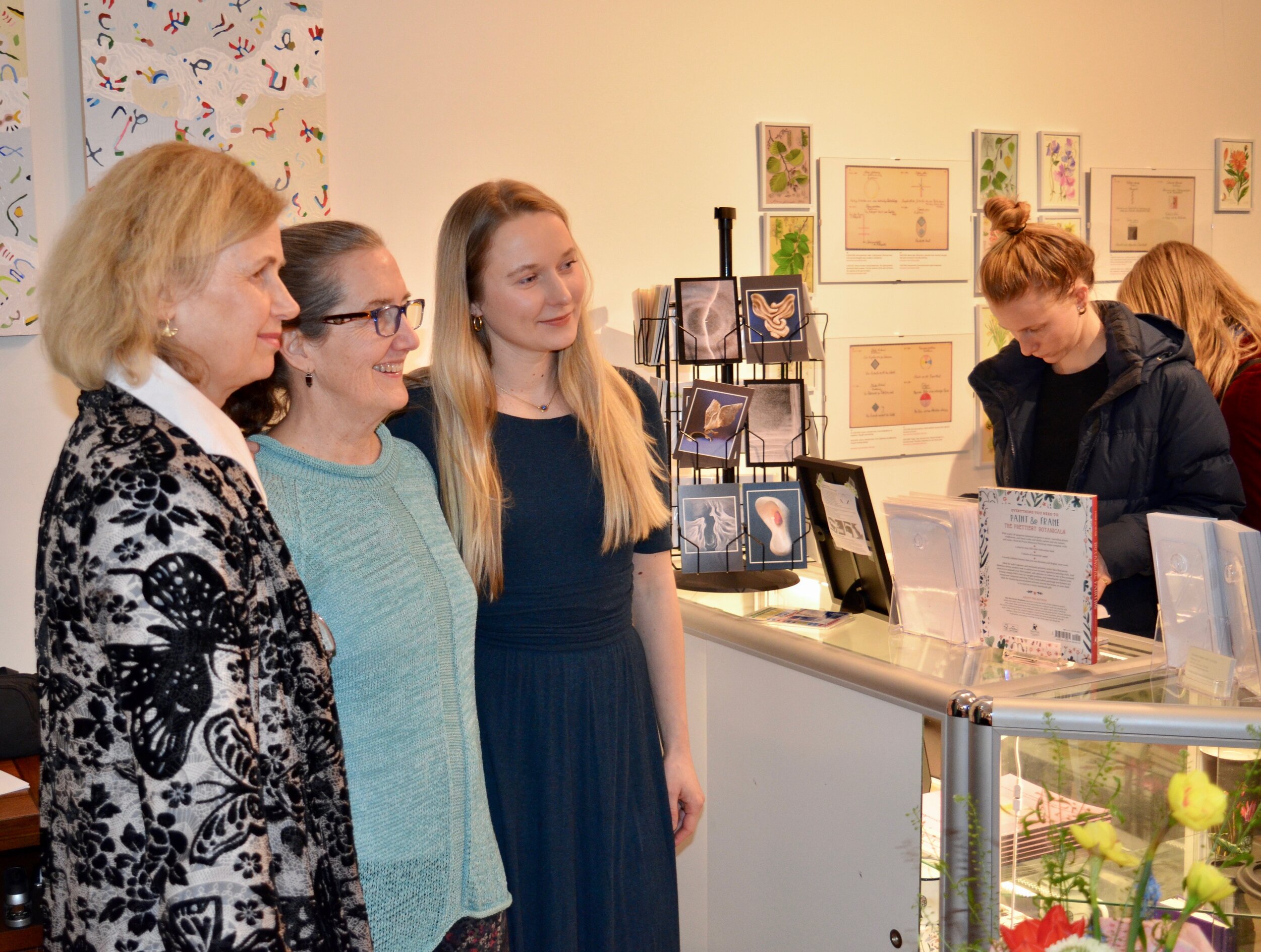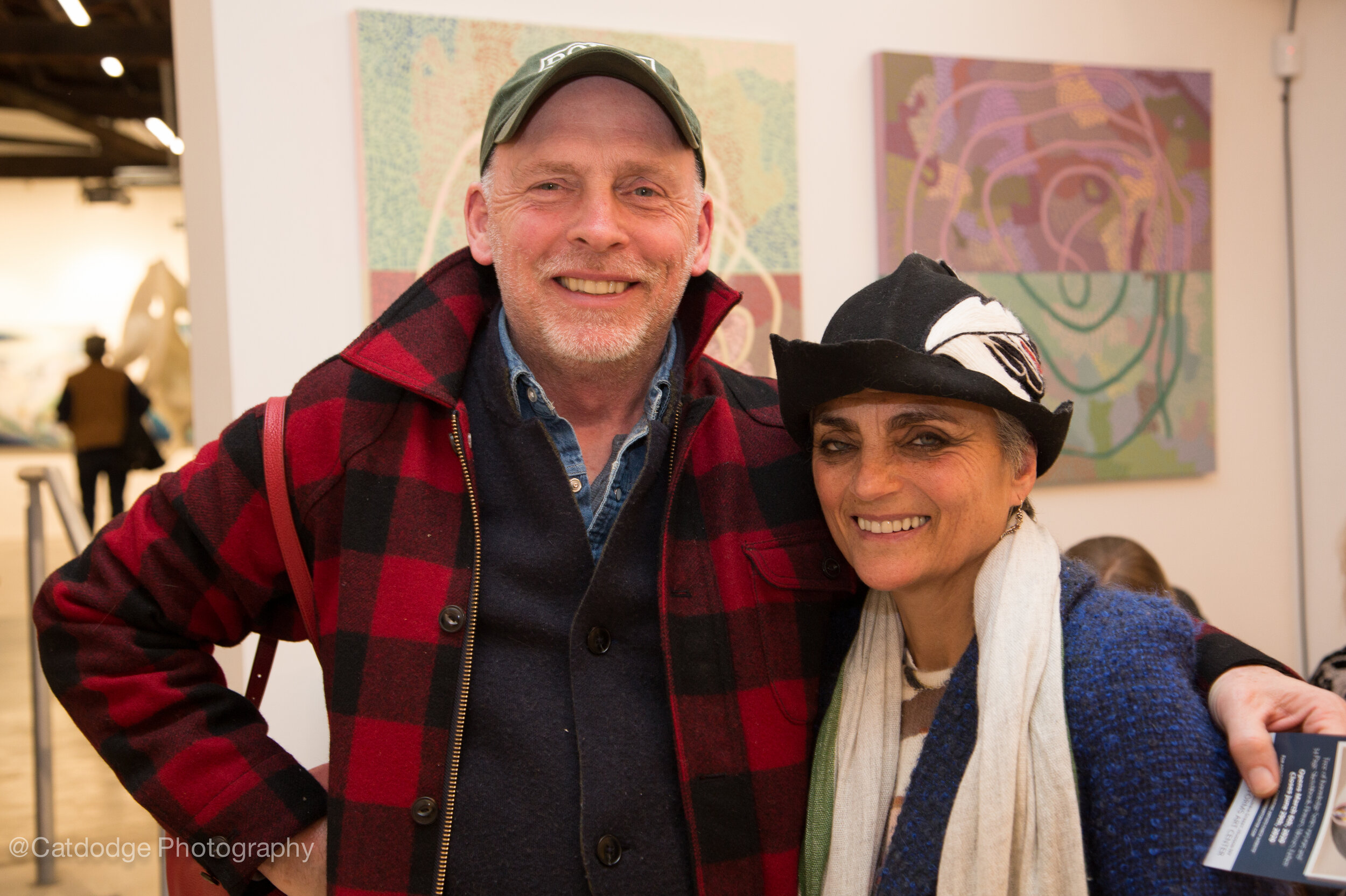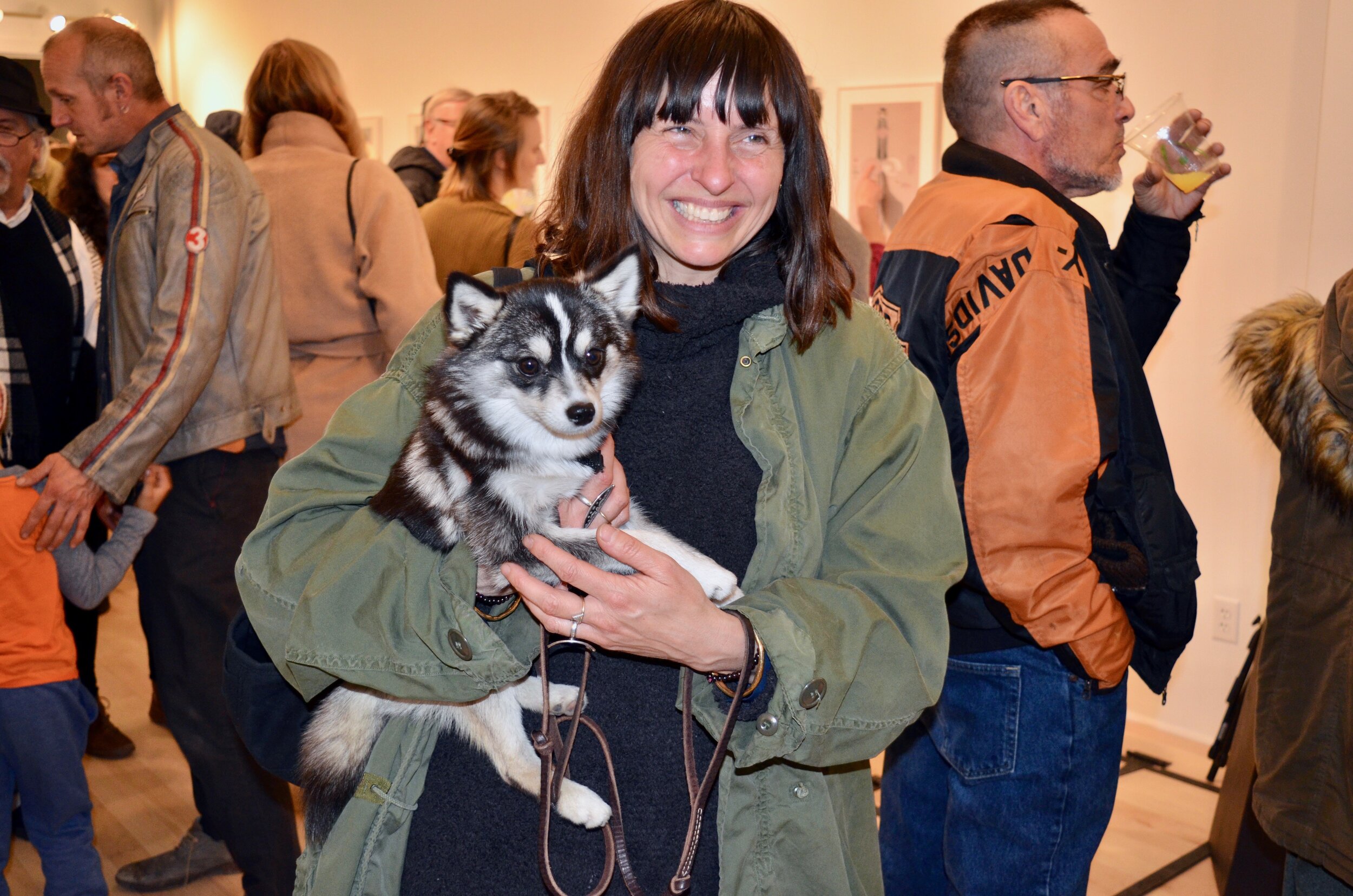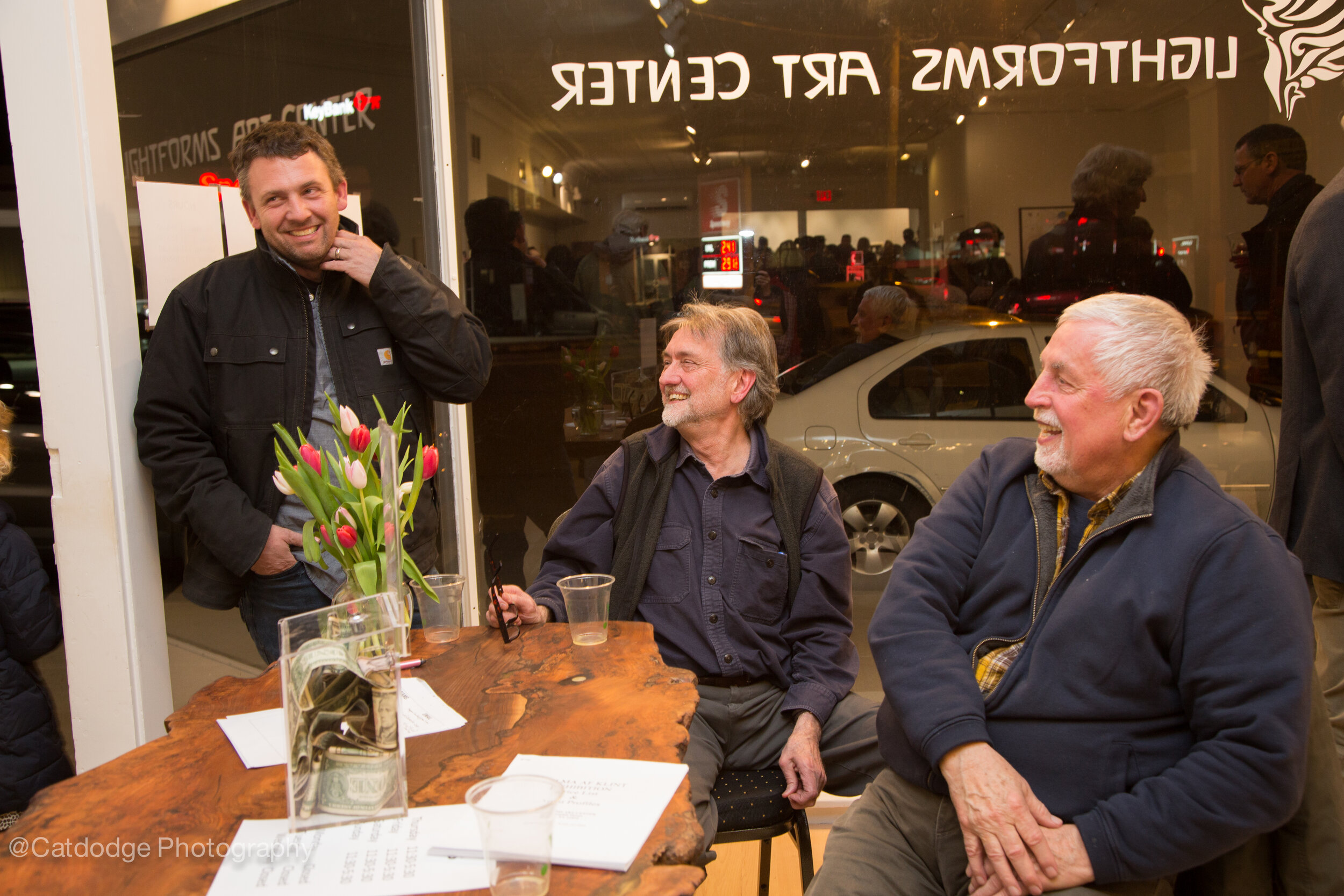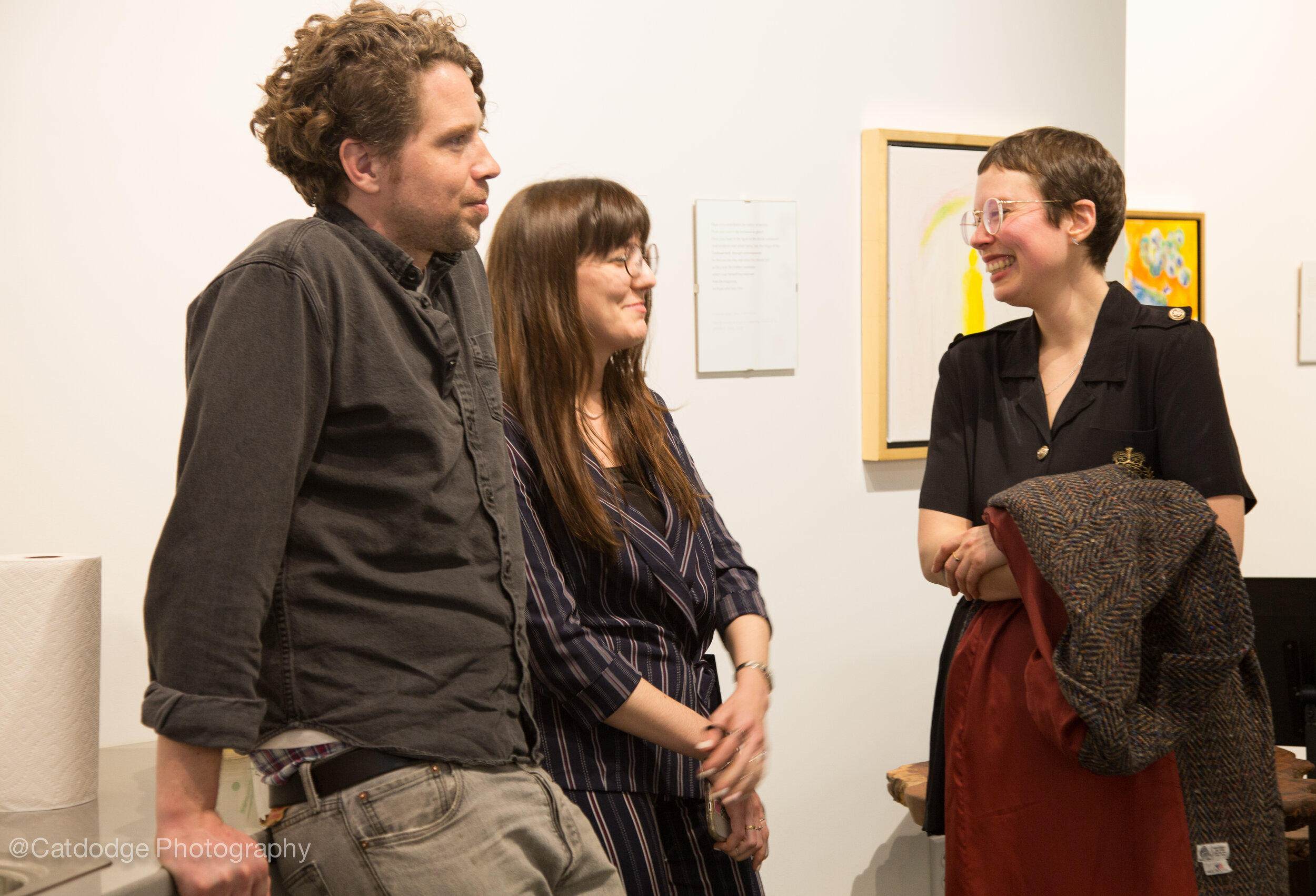Images from Hilma af Klint Exhibit and Show Opening
In a rare and exceptional opportunity, the Tree of Knowledge series by Hilma af Klint and a thirty-four-page Sketchbook by the artist that explores the inner workings of plants are on loan from the Albert Steffen Foundation in Dornach, Switzerland to Lightforms Art Center in Hudson, NY from late winter to early summer 2020. Just after Hilma af Klint’s work surprised, unsettled and enchanted the art world during the 2018/2019 season at the Solomon R. Guggenheim Museum in New York City, visitors will have another opportunity to study a smaller selection of her work just two hours north of NYC at Lightforms Art Center in Hudson, NY.
Portrait of Hilma af Klint by Helena Zay
HILMA AF KLINT
ABOUT THE TREE OF KNOWLEDGE SERIES
The Tree of Knowledge series vastly expands on the traditional story from Genesis: The compositional and pictorial elements of these paintings rather suggest that the Tree of Knowledge is not just a biblical story of old, but an inner reality active within us even today. The paintings guide us into a contemplative, living experience that might activate some of our chakras, particularly the base and crown chakra. In Hilma af Klint’s depiction the Tree of Knowledge seems to spring from the four petals of the base chakra that are formed by streaming currents possibly referencing the Water of Life. Some of these streams also emanate from a heart shape. The heart chakra and its congruence with the center of activity in the etheric body as the life body, the giver of life, are brought into illustrative reality in these paintings. A twelvefold radiance shines from a cup, possibly the grail at the top of the tree illuminating a space above and below. We are invited to think of the twelve signs of the zodiac, the twelve months of the year or the twelve petaled lotus flower. Multiple lemniscates as symbols of the infinite enclosing both blue and yellow tones that symbolize male and female in af Klint’s symbolic language, float freely in the canopy of the tree like blossoms in a verdant spring. A white bird and a black bird interact in this tale of human becoming where we find them descending and ascending through the mental, astral and etheric plane. What growth are they initiating? Birds have been symbols of freedom, power, creation, an image of the freely rising soul, and have served as a link between the human and the supernatural world. In af Klint’s depiction they hover closely to the nodal points of the rising and falling steams in the Tree of Knowledge paintings. Also, great angels with prophetic trumpets, a winged child and a man and woman in the act of bringing forth this child kneel at the trunk of the tree. Flowers, organic shapes and the constantly flowing River of Life that seems to follow a map not dissimilar to human circulatory pathways, hold the paintings together in this sequence of knowing and becoming.
In Rudolf Steiner’s color lectures yellow is the lustre of the spirit and blue is the lustre of the soul. He also mentions image colors: “Green represents the lifeless image of the living, peach-blossom represents the living image of the soul, white or light represents the soul’s image of the spirit and black represents the spiritual image of the lifeless.” (Steiner, Rudolf. Colour, Steiner Books 1992). These colors appear particularly strongly in the 4th and 5th painting of the Tree of Knowledge series and we can assume that Hilma af Klint knew about Steiner’s particular descriptions of the meaning of colors.
The Tree of Knowledge series is an imprint of life we can feel active in us at any moment and Hilma af Klint’s depiction offers an engaging view into this particular stage on the path to enlightenment and make us aware of an ever active force within us.
-Martina Angela Müller
BIOGRAPHY/COMMENTARY by David Adams
Hilma af Klint (1862-1944) was born near Stockholm, Sweden, into a bourgeois family with a long line of male naval officers, navigators, and ocean map-makers (and no interest in art). She was classically trained as a painter, taking classes in portrait painting in 1880-81 before attending the Royal Academy of Fine Arts in Stockholm from 1882 to 1887, part of the first generation of women accepted by art academies. Graduating with honors, the Academy provided her with a studio in the art center of Stockholm, where she worked until 1908, mostly painting conventional naturalistic landscapes and portraits, which she exhibited and sold. With money she earned she took study trips to Belgium, Norway, Holland, Italy, and Germany. She also created many careful botanical studies of plants and flowers and worked as an illustrator of animal surgery techniques at a Stockholm Veterinary Institute (1900-01).
Although raised in the Lutheran church, already as a child af Klint had supersensible experiences (apparently a degree of natural clairvoyance or “second sight” ran in her family) and at age 17 (1879) joined the Spiritualist Literature Association and began participating in then-popular “séances” with secondary school friends. This interest was stimulated when, at age 18, she wrote that she tried to convince the soul of her 10-year-old sister Hermina that she was dead (from influenza) and needed to continue on in the afterworld. But in early 1882 she abandoned the séances as not serious enough.
Later she and a few friends joined the Edelweiss Society, founded in 1890 as a kind of combination of Spiritualism and Theosophy. In 1896 she formed with four other women “The Friday Group” or “The Five,” a Christian spiritualist group that met weekly for the next ten years in each other’s homes and studios for meetings consisting of a prayer, meditation, New Testament Bible study, a benediction, and ending with a séance while kneeling around an altar with a triangle and cross, during which they contacted disembodied spirits and spiritual guides. At least one of the crosses they used on the altar was a white rose-cross with a glass rose in the middle on a 3-level base, and they seemed to feel the communications and guidance they received was associated with the Rosicrucian stream of esoteric spirituality. Taking turns serving as trance-mediums, they also received messages through a psychograph (an instrument to record psychic transmissions) and via automatic drawing and writing in pencil. Over time, various messages, images, and symbols were recorded in a series of 5 notebooks and 9 sketchbooks documenting their weekly séances (books that af Klint kept her whole life and used as a resource). By 1903 the at-first somewhat skeptical af Klint had become the group’s chief medium. In 1889 she had joined the Swedish Theosophical Society (founded that same year) and in 1920 the Anthroposophical Society, yet during the 1890s she also ran a Christian Sunday School on a family farm with a cousin. From age 18 onward she read Christian, Buddhist, Jewish, Rosicrucian, Hermetic, and Theosophical texts, and her eventual library consisted of many theosophical and anthroposophical books as well as other occult literature.
At the time popular and fashionable, Spiritualism, at its peak near the end of the 19th century, had about 8 million followers in the U.S. and Europe. It used specially prepared trance-mediums (usually women) beginning in the 1840s in the U.S. and somewhat counteracted the peaking scientific materialism of the 19th century. The Five found themselves in regular, repeated contact with a number of named spirits (Teohatius, Amaliel, Clemens, Georg, Gregor, Ester, Ananda), two of whom – Amaliel and Ananda – were said to belong to a group of still more advanced spirits that the others served, called the High Ones/High Guides/High Masters, whom af Klint tells us in one of her notebooks, are “the Masters of Mysteries” and “servants of Christ who reside in Tibet.” “An exalted and holy brotherhood, known to all mystics who participate in the evolution of the world. . . . The High Masters fill the entire universe.”
Hilma af Klint has been described physically as a slender, small woman with a beautiful face, barely 5’ 2” tall. As a serious, alert, grounded, and independent personality, Hilma was said to be able to enter and leave the spiritual astral world at will. A vegetarian, she lived a simple ascetic life devoted to art and spiritual matters. She normally wore black. In 1907 she wrote, “I have been sent to work for the Rosicrucian world of ideas.” At her death in 1944 she left well over 1,200 paintings and at least 127 handwritten and illustrated notebooks/sketchbooks (over 26,000 pages of writing, mainly in Swedish). How did these extensive artworks come about?
Already in 1904 the spirit Ananda predicted to The Five the creation of future paintings, presumed to be shaped from the astral plane, while that same year the spirit Gregor foresaw the building of a future temple that af Klint would help design and construct. In 1905 af Klint also was informed she would receive a mission in the area of painting of “auspicious work” in service to the Mysteries. Gregor described this as concerning “all the knowledge that is not of the senses, not of the intellect, not of the heart, but is the property that exclusively belongs to the deepest aspect of your being […] the knowledge of your spirit.”2
Then af Klint’s notebook entry from January 1, 1906, stated: “Amaliel presented me with a task and I immediately said Yes. The expectation was that I would dedicate a year to this task. In the end it became the greatest work of my life.” She was to depict “the immortal aspect of Man” and paint “ a message to humanity.” She gave up her more realistic painting, underwent a ten-month purification to prepare herself involving prayer and fasting, and began in November 1906 at age 43 by creating 34 preparatory paintings as preliminaries to the major task. These preparatory works included the series of 26 small paintings that became the Primordial Chaos Series, seemingly about the Creation or earlier phases of human evolution, for which she received detailed instructions from her spirit guides and passively allowed her hand to be guided in a somewhat looser style by these spirits. A note in The Five’s séance book for November 7, 1906, speaks of her interpreting “the color hearing and seeing tones,” and says, “Amaliel draws a sketch, which H. [Hilma] then paints.” A notebook entry from 1907 concerning another small preparatory series of that time, The Large Figure Paintings, reads, “The pictures were painted directly through me, without any preliminary drawings and with great force. I had no idea what the paintings were supposed to depict; nevertheless, I worked swiftly and surely, without changing a single brushstroke.”
In the freely painted Primordial Chaos Series (part of the larger WU/Rose Series) she explored principles of polarity – light and dark, good and evil, male and female – and their possible reunification. In these and later works the letter “W” represents matter, while the letter “U” represents spirit, with “WU” indicating a union of the dualities. Some of the abstract symbolic language she began to employ in these and later paintings was already received by The Five between 1896 and 1906: the snail, rose (and rose cross), snake, lilies, a wide array of botanical imagery, an elaborate system of diagrammed dualities, symbolic words and letters, and certain expressive geometrical forms. One notebook records a message received in 1907 from the High Ones: “The purpose of these letters is to prepare the way for a language of symbols that has already existed forever and that has now been given to humanity by the creative spirits.”29
On November 4, 1906, af Klint noted the message, “You will commence a task that will bring great blessings on coming generations.” She also wrote, “Your mission is to open their eyes to a life that lasts for eternity.” She clearly felt she had an important higher calling. She was able to fulfill her promise from May 1907 to April 1908, when she painted The Ten Largest, taking about four days for each one, each executed in tempera on paper glued to canvas, and each about 10’ 5” high by nearly 8’ wide. Keeping all these paintings secret, she noted about her process of working, “It was not the case that I was to blindly obey the High Lords of the Mysteries but that I was to imagine that they were always standing by my side.” In another notebook entry she wrote, “I immediately began to work in such a manner that the pictures were painted through me directly without any preliminary drawings and with great force.” She began to use many unusual color schemes in these paintings, perhaps imitated from her spiritual visions, and also with certain symbolic meanings. For example, she later described a “bluish pink color” as indicating “trusting in previous incarnations.”
She continued with several additional series of Paintings for the Temple (111 in all), stopping in 1908 for four years to care for her blind mother, during which time she also studied H. P. Blavatsky’s The Secret Doctrine as well as a number of western philosophers. 1908 was also the year of her first meeting with Rudolf Steiner, then the leader of the German Section of the Theosophical Society. In April of that year after giving some lectures in Stockholm that we suspect af Klint attended, Steiner was lecturing a few days later in Oslo, Norway, when af Klint invited him to come to Stockholm to view her secret paintings and advise her. He was reluctant at first to travel there, but she managed to convince him to come to her studio in Stockholm, offering to pay his travel costs, and showed him the paintings she had so far completed mediumistically, which he contemplated silently. She was hoping he would be able to analyze and interpret them in detail for her. Although, as she recorded, he did tell her a few things about some of the paintings and their symbolism and confirmed that at least certain paintings “belonged to the astral world,” she seems to have been generally disappointed by his visit.
Steiner also objected to her working passively and mediumistically as guided by spirits and apparently encouraged her instead to consciously develop her own spiritual faculties through meditation and take a more inwardly active and independent role in her artistic creation as a more proper modern way to obtain and express spiritual knowledge. Further, he apparently predicted that her paintings would not be understood for at least fifty years. This comment seemed to help her develop the attitude that these paintings only belonged to the future, when human beings might be ready to accept and understand them, and should in the meantime largely be kept secret.
We should further keep in mind that this studio visit in Stockholm was only a bit over a year after Steiner’s surprising introduction at the 1907 Congress of the Federation of European Sections of the Theosophical Society in Munich of artistic work as essential to a modern mystery culture like the Theosophical Society. Among other things, this involved introducing the “musical” principle of metamorphosis of form, the distinction between traditional esoteric symbols and a modern contemplative experiencing of esoteric art purely as form and color, and the basic layout and features (from what he called “the true temple of the Rosicrucians”) of what would eventually become his first Goetheanum building in Dornach, Switzerland. The work af Klint was channeling then must have seemed pretty far removed from the new artistic impulse Steiner was trying to introduce.
When in 1912 she resumed work on the series of Paintings for the Temple, she steadily modified her method of working. She would spiritually receive artworks formed as spiritual images or visions, which she then would need to interpret and compose into physical paintings. Her contact with spiritual guides became freer and more personal. She said she had gone through an occult education to become independently clairvoyant and able to research spiritual worlds in a more conscious way. She continued to work serially and systematically, creating paintings in series with subgroups, numbered like scientific research. These works continued to explore a path toward a harmony between spiritual and material worlds, good and evil, female and male, religion and science.
By 1915 af Klint had finished 82 additional paintings to complete the set of 193 Paintings for the Temple (organized into 16 groups or series), which she had worked on since 1906. These later series, which includes The Tree of Knowledge on exhibit here, had more topical identities (e.g., The Swan, The Dove, and The Atom) and a wide range of symbols. These paintings were intended to be displayed in a spiraling temple that af Klint made a few sketches for in the 1930s, but was never able to complete.
Especially from 1915 onward she worked in a more reflective, explorative, less spontaneous way, often with more geometric forms, and including a series on World Religions. In 1917 she wrote: “Hereafter I shall not receive my direct orders in the same way but must seek out guidance, which with a simultaneously visible and invisible finger will show me what I am to examine. Thus what is required of me is rather that I should undertake my own studies than be lectured to with regard to what I am to present. During the foregoing period of development I have been like a vessel which is filled from above while it constantly overflows, always being more than full with the exception of brief interludes. Now the situation is reversed, now it is a matter of filling the bowl by means of my own studies, though still under guidance, yet still by means of free studies.”
Rudolf Steiner again lectured in Stockholm in both 1912 and 1913, and presumably af Klint attended at least some of those. When her mother died in 1920, af Klint felt freer to travel and in September began to undertake regular journeys to Dornach. Over 8 or 9 separate visits from 1920 to 1925 (the year of Steiner’s death) she spent altogether more than a year in Dornach (with the longest single visit lasting six months). There she could observe the style of painting inaugurated by Rudolf Steiner on the Goetheanum cupola murals, learn something about his approach of “painting out of the color,” and how Steiner was extending Goethe’s color theory (which she also studied). She may have attended his lectures specifically on color in Dornach, May 6-8 in 1921. She attended various lectures by Steiner and about 36 of her later notebooks are full of extensive notes from these, some of them in German taken by Thomasine Anderssen, her mother’s former nurse who knew German better than her. She had conversations with Steiner, and it is even possible that she assisted with work on the first Goetheanum. All she learned in Dornach seemingly led her to stop painting again until 1922.
Especially from 1922 onward for the rest of her artistic life she changed her painting to working in a wet-on-wet watercolor technique, creating more than 200 watercolors from a more anthroposophical approach. She did not just externally copy a “Goetheanum style” of painting, but worked at penetrating the inner nature of colors and how form can arise from them as well as with a clairvoyant, spiritual-scientific research into the natural world that also used art as a means of recording or reporting the results of such investigations. Some of her later paintings – especially from the series On the Viewing of Flowers and Trees painted between July and October, 1922 – seem to be based on meditative exercises from Steiner’s book How to Know the Higher Worlds, such as the observation of growing and withering plants as well as seeds.
Her most extensive project from the late “anthroposophical” period were extended botanical studies during 1919-1920, annotated in German and recording the characters and qualities of individual plants, all of which employed a combination of clairvoyance, meditative observation, and artistic expression – titled Flowers, Mosses, and Lichens. She recorded these in German in three notebooks, her copy of one of which is exhibited here. She developed an unusual threefold diagrammatic language to capture the qualities of each plant, with each species given either a full or half page: its scientific name, a drawing of “directional lines” (often a square divided into 4 quadrants, sometimes with expressive colors), and a description of its emotional or spiritual qualities (sometimes seemingly pointing to therapeutic properties). Later in one nodtebook it was written: “The images are seen on the astral plane.”
Her hopes for support from Steiner for the interpretation and exhibition of her paintings apparently came to nothing. But she continued to feel her earlier paintings were of value and undertook to interpret and document them. In 1927 she made a copies of the artworks exhibited her and gave them to Albert Steffen, then the leader of the Anthroposophical Society after Steiner’s death in 1925. Likely sometime after 1917 she created a “catalog” of her work in which she organized The Paintings for the Temple into a sequence of discrete series with small black-and-white photographs along with a small watercolor version of each original painting and added titles, comments, and notes – a kind of “mobile museum” in miniature that she could use to promote and share her artwork in places like Dornach.
Recently the first public exhibition of a selection of her Paintings for the Temple has been rediscovered to have taken place at the World Conference of Spiritual Science and Its Practical Applications, held in London in 1928 from July 20 to August 1, and intended to introduce the various fields of anthroposophical work to the general public. af Klint was given an entire room there where she exhibited “her studies of Rosicrucian symbolism” and also gave a talk about them. Two years later in 1930 her last, two-week visit to Dornach took place, and a notebook entry of December 27 of that year expressed her disillusionment with the conflicts and power struggles that had developed among Steiner’s successors in the Society.
She continued to receive guidance into old age from some of her spirit teachers, including Gregor, Georg, Amaliel, and Ananda. Her last painting was completed in 1941. She continually reworked her handwritten notes and interpretive annotations about her artwork, preparing for a future humanity that she hoped would understand them, including creating indices to help decode the many linguistic symbols she had received in her mediumistic works, which are usually unique integrations of language and visual artistic elements. In 1917 she had dictated to Anna Ljungberg an account of her understanding of spiritual life, “Studies of the Life of the Soul,” which she and her late-life “secretary” Olof Sundström in 1941-1942 typed to create a manuscript of more than 2,000 pages. In one of her notebooks she wrote: “The experiments I have conducted . . . that were to awaken humanity when they were cast upon the world were pioneering endeavors. Though they travel through much dirt they will yet retain their purity.” When she died very poor at nearly age 82 in 1944 a statement in a notebook from 1932 stated that all her works only “should be opened twenty years after my death, . . .” and she also specified that none of them should ever be sold.9
Unexpectedly, her entire estate (except for a few works in Dornach) was bequeathed in her will to the care of her nephew Erik af Klint, “a naval officer with neither the financial means nor the theoretical background in art to properly steward them.” Erik rolled up her paintings and built wooden crates to store her work. In a difficult-to-uncover history, the crates became variously stored after her death in Eric’s attic with a tin roof subject to extremes of hot and cold temperatures, in a building (an old barn?) in Järna watched over by anthroposophical artist Arne Klingborg, and, currently, in a warehouse between Stockholm and Järna. However, the exact sequence and years of these far-from-ideal storage situations are still rather unclear. A little over twenty years after Hilma’s death, Erik and his son Johan in 1966 undertook to unpack the paintings and photograph them. As one effort to find a permanent home for her work, Erik offered the paintings to the Moderna Museet in Stocklholm in 1970, but the offer was rejected. When the Hilma af Klint Foundation was formed in 1972 both Klingborg and anthroposophical art historian Åke Fant were on its original board.
Outside of a few small shows in Sweden, her paintings were only first exhibited in public in 1986 in Los Angeles as part of Maurice Tuchman’s large, revelatory show The Spirit in Art: Abstract Painting 1890-1985 (which traveled to Chicago and The Hague) – 42 years after the death of af Klint. The “index” she wrote for word and letter symbols in her paintings often contains highly esoteric (and not always easily understandable) explanations. Arising from a clairvoyant visionary process, her artwork is somehow both abstract and representational with unique ways of coding information pictorially that needs further investigation. Today af Klint can’t easily be integrated into any existing category of artist. Historically, at a previously unacknowledged early date she painted before almost anyone else in an “abstract” or “non-objective” mode, made unsigned large-scale paintings on the studio floor well before the Abstract Expressionists, used automatic drawing and writing long before the Surrealists, and demonstrated the groundbreaking original creativity of a female artist highly unusual, if not unprecedented, for her time. What we know of her life, motivations, and creativity is still an incomplete story until her extensive diaristic notebooks in Swedish are translated and digested – and intelligently related to her occult and anthroposophical knowledge and contacts. The artworld is now engaged in trying to broaden its perspectives to adequately incorporate her work as an inspiring example of a life dedicated to the spiritual sources of visual art.

